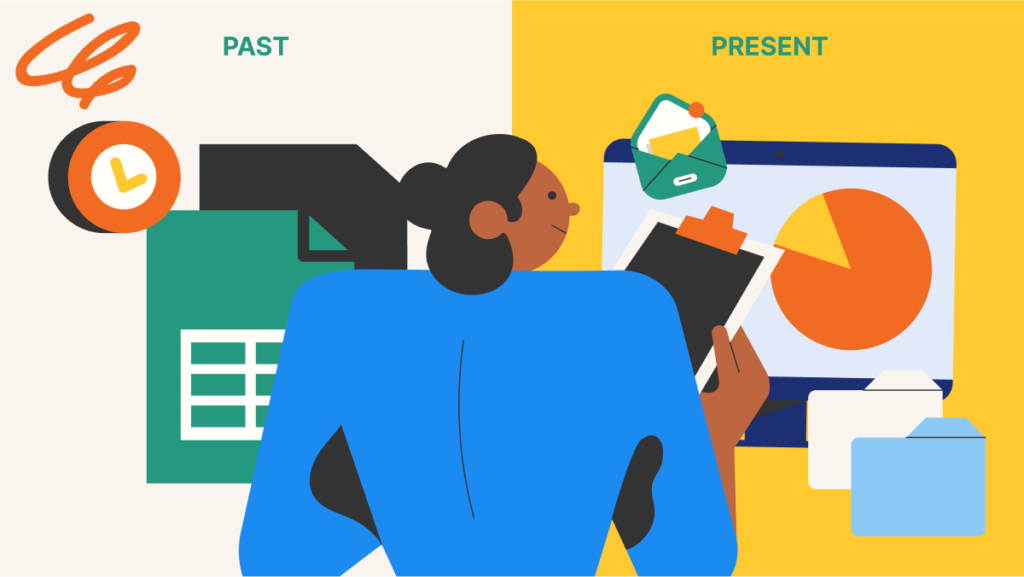According to a survey conducted by Intellect and Milieu Insight, 41% of HR professionals in Singapore feel burnt out at least once a week, with 75% experiencing burnout at least once a month. Nearly half (49%) said that they lacked mental health support, and only 32% said they felt their companies give very high or high importance to employees’ mental health.
Among the most vulnerable to burnout are employees from smaller and often resource-strapped small and medium-sized enterprises (SMEs).
“Traditionally, SMEs face the standard problems of cash flow crunch because generally, they are not as well-resourced as bigger companies,” said Cedric Chew, deputy executive director of the Singapore Human Resources Institute, in an interview with Intellect’s clinical director Oliver Sundermann. You can watch a snippet of their extended conversation here:
This video series is part of Intellect’s #CanYouHearMe campaign, which spotlights HR professionals – the caregivers of our workforce – and features industry leaders.
“Now, with COVID, geo-political issues, and climate change issues intensifying over recent years, it’s made things much worse. If you’re cash-strapped in the first place, when costs go up and sources of income dry up, your basic traditional problems are amplified.”
So what’s an SME to do? Cedric sheds some light on that.
Get buy-in from all stakeholders

“Wellbeing is something that’s not a priority in a lot of SMEs, especially the smaller ones,” Cedric explained. “When you’ve got very little to work with and you’ve got to do a lot, something gives. Usually, it’s the human wellbeing part.”
However, when companies don’t invest in wellbeing, they run the risk of losing the talents who run their businesses in the first place. So, the first thing that SMEs need to do is to get the entire company – founders, bosses, managers, and employees – on the same page.
This is especially important in smaller organisations without a dedicated HR unit. In their place, typically, are a couple of non-HR professionals who may not necessarily be wellbeing practitioners themselves. Employee wellbeing, therefore, has to be a companywide affair.
“Just because you provide it [mental health resources] doesn’t mean you believe in it. You may not even be providing the right kind of benefits, right?” Cedric said.
For example, office gyms and yoga practices may promote mental wellbeing, but employees suffering from burnout or other mental health ailments may require more specific interventions. As such, they would benefit from end-to-end mental health benefits which could range from talk therapy to psychiatry.
Maximise value for money
Recognising the importance of employee wellbeing is the first step; tailoring the offerings to your organisation’s needs is a whole other ball game. After all, what works for another SME may not work for you.
Can your employees benefit from mental health days, which are relatively low-cost to implement? How about leveraging mental health professionals, or bartering your business’s goods and services in exchange for their expertise?
“We’re also trying to see who can help build communities of practice clusters to build expertise and support, and resource pools for specific areas,” Cedric explained, adding that pooling resources such as psychologists, therapists, and nutritionists with other SMEs saves costs.
Reduce barriers to utilisation

According to the Intellect survey, around 51% said their companies provide them with mental health resources. Among those, 24% said they felt uncomfortable using those resources, such as time off, employee assistance programmes, and other wellbeing initiatives.
“Providing those resources is one thing, but then working with organisations to raise resource awareness and to normalise it is another thing,” Cedric said, adding that training managers on mental health and mental health literacy is an integral part of the equation.
“People still feel like they’ll be seen as an outlier if they’re the first ones to be enthusiastic about such resources. I’m not sure if it’s an Asian or Singaporean thing, but people generally don’t want to be the first to do it,” Cedric said.
This is where managers and top executives come in. Once employees see their leaders taking mental health breaks or going to therapy, the act of reaching out becomes normalised. For instance, when Tech in Asia’s CEO Willis Wee led by example, they achieved a 75% utilisation rate within eight months of partnering with Intellect.
“You need to create a culture where whatever the background of the workers, they feel sufficiently comfortable [to use these benefits or resources],” Cedric said, adding that encouraging employees to use these resources in groups also alleviates the pressure on HR.
Prioritise human development
Last but not least, there also needs to be an overall shift in the way founders, leaders and HR staff view people and human resources.
“HR, traditionally or technically, is about increasing profit. Or rather, supporting the making of profits for organisations… people are literally a resource for making a profit,” Cedric explained. On the other hand, a human development approach acknowledges that whilst profit is a key motive, the focus should be on the human as a being of “intrinsic value in and of themselves.” If anything, mental wellbeing is as much of an investment as learning and development.
Cedric said that this shift needs to occur not just within organisations, but within nations because countries struggle with the same problem but on a much larger scale.
“If you neglect the key people component, or the human wellbeing, the human wellness quality of life component, you pay the price. Governments sometimes lose their mandate to rule because the people aren’t happy,” Cedric said.
Going back to the basics
At the end of the day, mental wellbeing might look like a lot of investment, but SMEs can focus on aligning stakeholders, identifying best-fit strategies, and encouraging take-up. As organisations change the way they view human resources, stopgap measures will make way for sustainable strategies. Playing the long game will yield dividends in terms of workplace culture and business objectives.
“Maybe human beings can suffer for a short while and still keep the status quo, but not for too long. Things will give, right? So if you’re looking further, you’re being wiser and saying that sustainability nationwide means that you invest in people, and it’s not just the hard stuff…but it’s the wellbeing as well…you need to go back to basics.” Cedric said.








